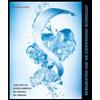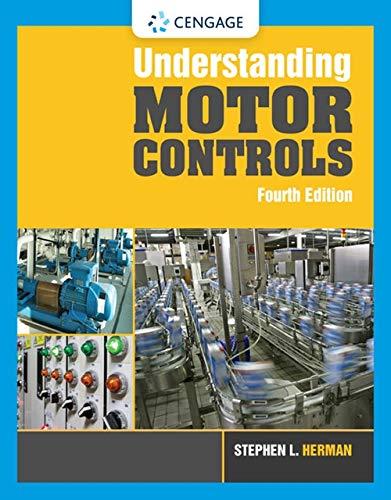
Automotive Technology: A Systems Approach (MindTap Course List)
6th Edition
ISBN: 9781133612315
Author: Jack Erjavec, Rob Thompson
Publisher: Cengage Learning
expand_more
expand_more
format_list_bulleted
Textbook Question
Chapter 21, Problem 8RQ
What type of sending unit is typically used to monitor oil pressure?
Expert Solution & Answer
Want to see the full answer?
Check out a sample textbook solution
Students have asked these similar questions
Match the correct port/hole with its function in a pressure regulator.
FLUID POWER SYSTEMS
Draw a simple schematic of a 3-way, 2 position air piloted directional control valve operating a single acting cylinder, include a manual push button override as well.
Chapter 21 Solutions
Automotive Technology: A Systems Approach (MindTap Course List)
Ch. 21 - True or False? A driver information center...Ch. 21 - What is the purpose of an IVR?Ch. 21 - Explain how an air-core gauge works.Ch. 21 - What are two ways to provide input for the...Ch. 21 - Describe the two types of instrument panel...Ch. 21 - What is the device found in some fuel tanks to...Ch. 21 - What is the correct way to check a coolant...Ch. 21 - What type of sending unit is typically used to...Ch. 21 - What is the major difference between an indicator...Ch. 21 - True or False? The ABS lamp turns on whenever the...
Ch. 21 - The indicator needle on a speedometer is held to...Ch. 21 - Which of the following uses a permanent magnet and...Ch. 21 - What type of memory is used to store the...Ch. 21 - Which of the following is not a true statement...Ch. 21 - Which of the following statements about oil gauge...Ch. 21 - While discussing what the maintenance reminders...Ch. 21 - None of the engines gauges works: Technician A...Ch. 21 - The oil pressure light stays on whenever the...Ch. 21 - A digital speedometer constantly reads 0 mph:...Ch. 21 - All gauges operate but read lower than normal:...Ch. 21 - When testing an engine temperature sensor:...Ch. 21 - The coolant temperature gauge stays low (cold)...Ch. 21 - While discussing the instrumentation on a Toyota...Ch. 21 - The TPM warning lamp is lit: Technician A says...Ch. 21 - The yellow electronic throttle control warning...
Knowledge Booster
Learn more about
Need a deep-dive on the concept behind this application? Look no further. Learn more about this topic, mechanical-engineering and related others by exploring similar questions and additional content below.Similar questions
- how does a pilot check valve differ from a simple check valvearrow_forwardWhich of the following statements is not true? A direct acting PRV: Is complex in construction, therefore can malfunction if a very small dirt gets trapped inside the valve, which may result in safety hazard Offers uneven flow Does not provide precise pressure control Causes more wastage of HP compared to a compound one Which of the following basic system components has the primary function of removing the heat of compression from the air? Receiver Relief valve Pressure regulator Dryer Aftercooler Which of the following statements is true? A single acting cylinder may have two ports at two different ends and pressurized fluid can be directed to both of them A single acting cylinder with two ports will can be used as a double acting cylinder A single acting cylinder may have two ports at two different ends but into only one of the ports pressurized fluid is being directed A single acting cylinder…arrow_forwardexplain the function of the pressure relief valve within the engine oil pump.arrow_forward
arrow_back_ios
SEE MORE QUESTIONS
arrow_forward_ios
Recommended textbooks for you
 Automotive Technology: A Systems Approach (MindTa...Mechanical EngineeringISBN:9781133612315Author:Jack Erjavec, Rob ThompsonPublisher:Cengage Learning
Automotive Technology: A Systems Approach (MindTa...Mechanical EngineeringISBN:9781133612315Author:Jack Erjavec, Rob ThompsonPublisher:Cengage Learning Refrigeration and Air Conditioning Technology (Mi...Mechanical EngineeringISBN:9781305578296Author:John Tomczyk, Eugene Silberstein, Bill Whitman, Bill JohnsonPublisher:Cengage Learning
Refrigeration and Air Conditioning Technology (Mi...Mechanical EngineeringISBN:9781305578296Author:John Tomczyk, Eugene Silberstein, Bill Whitman, Bill JohnsonPublisher:Cengage Learning Understanding Motor ControlsMechanical EngineeringISBN:9781337798686Author:Stephen L. HermanPublisher:Delmar Cengage Learning
Understanding Motor ControlsMechanical EngineeringISBN:9781337798686Author:Stephen L. HermanPublisher:Delmar Cengage Learning

Automotive Technology: A Systems Approach (MindTa...
Mechanical Engineering
ISBN:9781133612315
Author:Jack Erjavec, Rob Thompson
Publisher:Cengage Learning

Refrigeration and Air Conditioning Technology (Mi...
Mechanical Engineering
ISBN:9781305578296
Author:John Tomczyk, Eugene Silberstein, Bill Whitman, Bill Johnson
Publisher:Cengage Learning

Understanding Motor Controls
Mechanical Engineering
ISBN:9781337798686
Author:Stephen L. Herman
Publisher:Delmar Cengage Learning
Mod-01 Lec-16 Basics of Instrumentation; Author: nptelhrd;https://www.youtube.com/watch?v=qbKnW42ZM5c;License: Standard YouTube License, CC-BY